|
one of the basic concepts of electronics cooling is effective transfer of heat from semiconductor devices to the ambient using heat sinks or other cooling technologies. the effectiveness of this approach depends on a system’s total thermal resistance, which is composed of discrete thermal resistances on the path of heat from the source to the ambient. one of these resistances is spreading resistance. spreading resistance occurs whenever a small heat source comes in contact with the base of a larger heat sink. the heat does not distribute uniformly through the heat sink base, and consequently does not transfer efficiently to the fins for convective cooling. figure 1 shows a cfdesign® simulation solution for such an occurrence. the spreading resistance phenomenon is shown by how the heat travels through the center of a heat sink base causing a large temperature gradient between the center and edges of the heat sink.
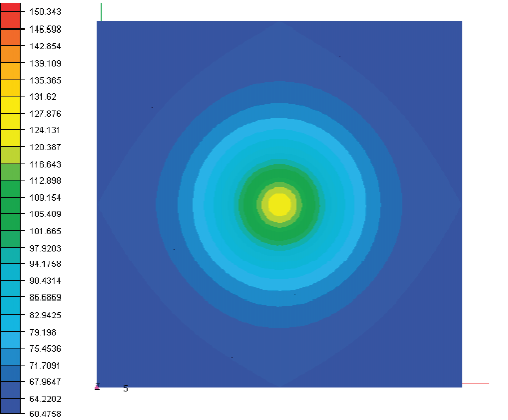
figure 1 simulation showing temperature distribution at the base of a heat sink
spreading resistance is an increasingly important issue in thermal management as microelectronic packages become more powerful and compact and larger heat sinks are required to cool these devices. in high heat flux applications, spreading resistance can comprise 60 to 70% of the total thermal resistance. a good estimate of spreading resistance is required to manage heat effectively using conventional air-cooled heat sinks. there have been a number of theoretical and experimental studies to estimate spreading resistance. two of the most notable methods belong to yovanovich et al. [1] and to gordon n. ellison [2]. while these extensive studies cover all aspects of spreading resistance, they involve cumbersome infinite series and complicated coefficient terms. fortunately, a simpler solution is provided by lee et al. [3] that yield results very close to those of complicated methods and can be easily programmed in any spreadsheet software. the solution is based on a circular spreader plate and circular heat source. thus, square spreader plates and heating sources must be converted into circular geometries as shown in figure 2.
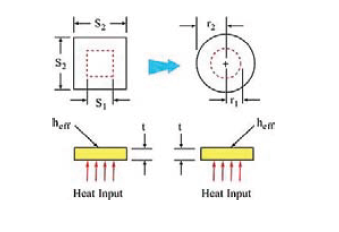
figure 2 transformation of a square spreader and heat source into circular geometry [4]
the transformation is based on the areas of the plate and the heat source being the same for both the square and circular geometries. so, the equivalent radii in the circular case are given by equations 1 and 2:

the equivalent radii, r1 and r2, may then be used along with the thermal conductivity, k, of the spreader plate
with thickness, t, to obtain the spreading resistance from equation 3 (below) [4].

equation 3
equation 3 estimates the thermal conduction spreading resistance from the maximum temperature of a heat source to the convective surface on the top of the spreader plate. the parameters that are required to evaluate this equation are defined in table 1.

table 1 definition of terms used in spreading resistance, equation 3
the accuracy of equation 3 is tested in a study by r. e. simons of ibm [4] which compares its results with those of the exact series solution developed by ellison [2]. these calculations are based on a fixed heat input area of 10 x 10 mm on a square thermal spreader plate 2.5 mm thick and ranging in size from 20 x 20 mm to 40 x 40 mm. two values of thermal conductivity were used, ranging from 25 w/mk for a material such as alumina, to 400 w/mk for a material such as copper. similarly, two values of heat transfer coefficient were used, ranging from 250 w/m2k to 1000 w/m2k. these values represent what could be achieved with low and high performance forced convection heat sinks, respectively [4].
a comparison of the results for the conduction/spreading thermal resistance, rsp, reveals that the error for the simplified formula ranges between -2.1% to +4.8% over all parameters [4].
spreading thermal resistance can be mitigated in a number of ways. one convenient and intuitive method is to simply increase the thickness of the base of a heat sink. however, one should realize that increasing the base thickness will always mean decreasing the height of the fins. a loss of the fins’ convective surfaces beyond a limit would offset the benefits of reduced spreading resistance. in estimating the spreading thermal resistance, the convective resistance must be evaluated at the same time to find the optimized thickness of the heat sink base.
another way to lower the spreading thermal resistance is to use heat sinks made from materials with high thermal conductivity. the most commonly used material is aluminum due to its light weight, good conductivity, and ease of manufacturing. however, some applications require heat sinks with higher thermal conductivities. in these cases, copper is often used because its thermal conductivity is twice that of aluminum. the main drawbacks of copper are its high cost, weight, and difficulty to fabricate.
figure 3 shows the effect of a heat sink’s base thickness and material on the spreading thermal resistance. to construct this figure, equation 3 is used for a spreader plate 40 mm square, with a 10 mm square heat source. the convective heat transfer coefficient is assumed to be 27 w/m2k. at first, as seen in the figure, thickening the base has a pronounced effect on the spreading resistance. however, this effect becomes less significant at subsequently higher thicknesses. on the material side, copper heat sinks consistently have a spreading resistance about half that of aluminum heat sinks. this is because the thermal conductivity of copper is about twice that of aluminum.
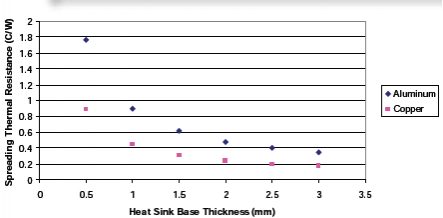
figure 3 the effect of a heat sink's material and base thickness on thermal spreading resistance
in some high-heat flux applications where the heat sink needs to be considerably larger than a semiconductor die, thickening the base and/or use of copper heat sinks may not be adequate to compensate for the conduction losses in the base. in these instances, forced spreading devices need to be implemented. one device that can be very useful in reducing the component temperature is a heat pipe.
a heat pipe is a vacuum hollow tube that has a wick structure on its internal walls and has a small amount of coolant fluid [5]. the fluid becomes vaporized by absorbing the heat in the evaporative section of the heat pipe. vaporized fluid will condense at the condenser section of the heat pipe. the condensed fluid is then drawn back to the evaporator side by capillary force of the wick structure and the cycle would continue. as a result, heat pipes if properly designed and manufactured, could have thermal conductivities of 10-50 times of a solid copper. figure 4 depicts the internal structure of a heat pipe.
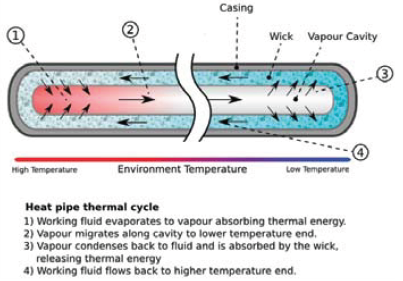
figure 4 internal structure of a heat pipe [4]
heat pipes can be embedded in the base of a heat sink to enhance the heat spreading at the base of the heat sink. the heat pipe spreads heat effectively across the sink base before it gets distributed to the fins. the result is more effective convective cooling since the fins’ base temperature will be higher, providing more effective use of the fins at the outer edge of the heat sink. there are several methods for embedding a heat pipe in a heat sink base. they can be completely embedded in the base or surface-embedded inside grooves machined into the base of a heat sink. in either case, conductive thermal epoxy is used to reduce the interfacial contact resistance between the heat pipe and the heat sink. figure 5 depicts two ats maxiflowtm heat sinks with embedded heat pipes. one sink has a completely embedded heat pipe and the other sink’s heat pipe is surface-embedded.

figure 5 embedded and surface-embedded heat pipe heat sinks
flat heat pipes, or vapor chambers, also have wide applications for reducing spreading resistance. similar to conventional heat pipes, they are implemented at the base of heat sinks to spread heat evenly through the sink. they are more efficient than cylindrical heat pipes because they’re able to transfer heat in two directions. in figure 6, the right-side image shows the internal structure of a vapor chamber, which is essentially the same as a cylindrical heat pipe. the image on the left shows how the use of a vapor chamber heat sink helps transfer heat uniformly throughout the entire heat sink. however, many designers avoid the use of heat pipes and vapor chamber because of their reliability. often times, with proper design of the heat sink the use of such devices can be eliminated.
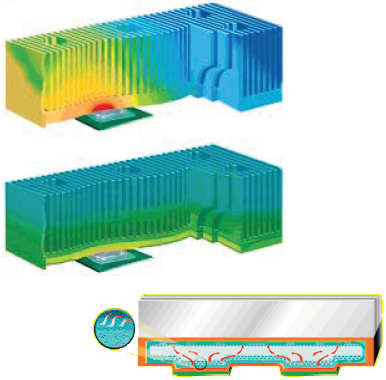
figure 6 vapor chamber internal structure and performance [7]
advanced thermal solutions, inc. (ats) has developed a solution to the spreading resistance problem: the forced thermal spreader, ftstm. the ftstm is a relatively thin, rectangular chamber in which a combination of mini and micro channels transfer and distribute heat at a very fast rate. the coolant fluid is drawn and circulated inside the ftstm chamber by a mini pump whose power consumption is less than 2 watts. the coolant is pushed through the micro channels at the center of the ftstm, creating high heat transfer coefficient. its flow is then redirected and passed through a number of mini channels, transferring heat as it exits the ftstm chamber.
research conducted at ats has shown promising results for the ftstm as a vital and effective method for reducing spreading thermal resistance. as a baseline for comparison, vapor chamber performance data was considered from a study presented by j. wei, et. al. (semi-therm 2003) [8]. in this study, a vapor chamber with the dimensions 125 x 75 x 4.5 mm was used on a 17 x 17 mm heat source. it yielded a spreading resistance of 0.12 °c/w. by contrast, the ftstm that was tested was smaller than the vapor chamber at 80 x 80 x 5 mm, and used a smaller heat source, 10 x 10 mm. in testing the ftstm, convective conditions similar to those in the vapor chamber were created so the performance of the two could be compared. testing under these conditions, the ftstm has yielded a spreading resistance of 0.03 °c/w, which is four times better than the one for the vapor chamber. a cfdesign® simulation of the ftstm was also run to compare with the experimental results. figure 7 shows the solutions for two scenarios: one when no heat spreader is used and the other when the ftstm is applied.
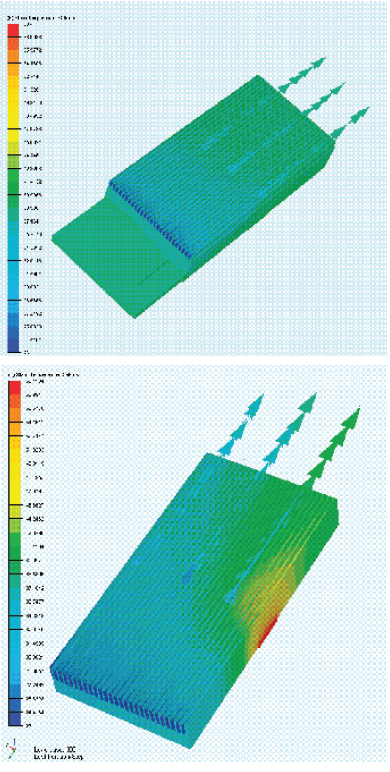
figure 7 simulation comparing the effects of the fts(tm) on heat sink temperature distribution
figure 7 clearly shows that with ftstm, the temperature throughout the heat sink on the left is uniform and substantially on the lower (cool) side of the temperature scale. as the bottom image shows, when the heat sink is used alone, the result is a high temperature concentration at the component area and much cooler temperatures elsewhere in the heat sink. this huge spreading resistance would keep the heat from being dissipated through the base and consequently the fins.
as semiconductor chips are made with more compact packaging and higher power densities, spreading resistance is becoming the dominant part of their cooling system’s total thermal resistance. in order to stay within the limits of air-cooled capabilities, spreading resistance must be properly managed based on available techniques and technology. before investing in exotic and expensive solutions, it is worthwhile to determine whether the problem can be solved by simply optimizing the heat sink design parameters or considering a heat sink with higher thermal conductivity.
references:
1. yovanovich, m., muzychka, y. and culham, j., spreading resistnace of isoflux rectangules and strips on compound flux channels, university of waterloo, 1998
2. ellison, g., maximum thermal spreading resistance for rectangular sources and plates with nonunity aspect ratios, ieee trans. comp., hybrids, manufac. technol., vol. 26, no. 2, 2003.
3. lee, s., song, s., au, v., and moran, k., constriction/spreading resistance model for electronic packaging, proceedings of asme/jsme engineering conference, vol. 4, 1995.
4. simons, r., simple formulas for estimating therma spreading resistance, electronics cooling, may 2004.
5. advanced thermal solutions, inc., heat pipes: heat super conductors, qpedia, july 2007.
6. a. mccloskey, how does a heat pipe work? heat pipes explained, http://www.ocmodshop.com/ocmodshop.aspx?a=920, august 15, 2007
7. mehl dale, vapor chamber heat sinks eliminate hot spots, thermacore international, inc.
8. wei, j., cha, a., copeland, d., measurement of vapor chamber performance, semi-therm symposium, 2003.
|